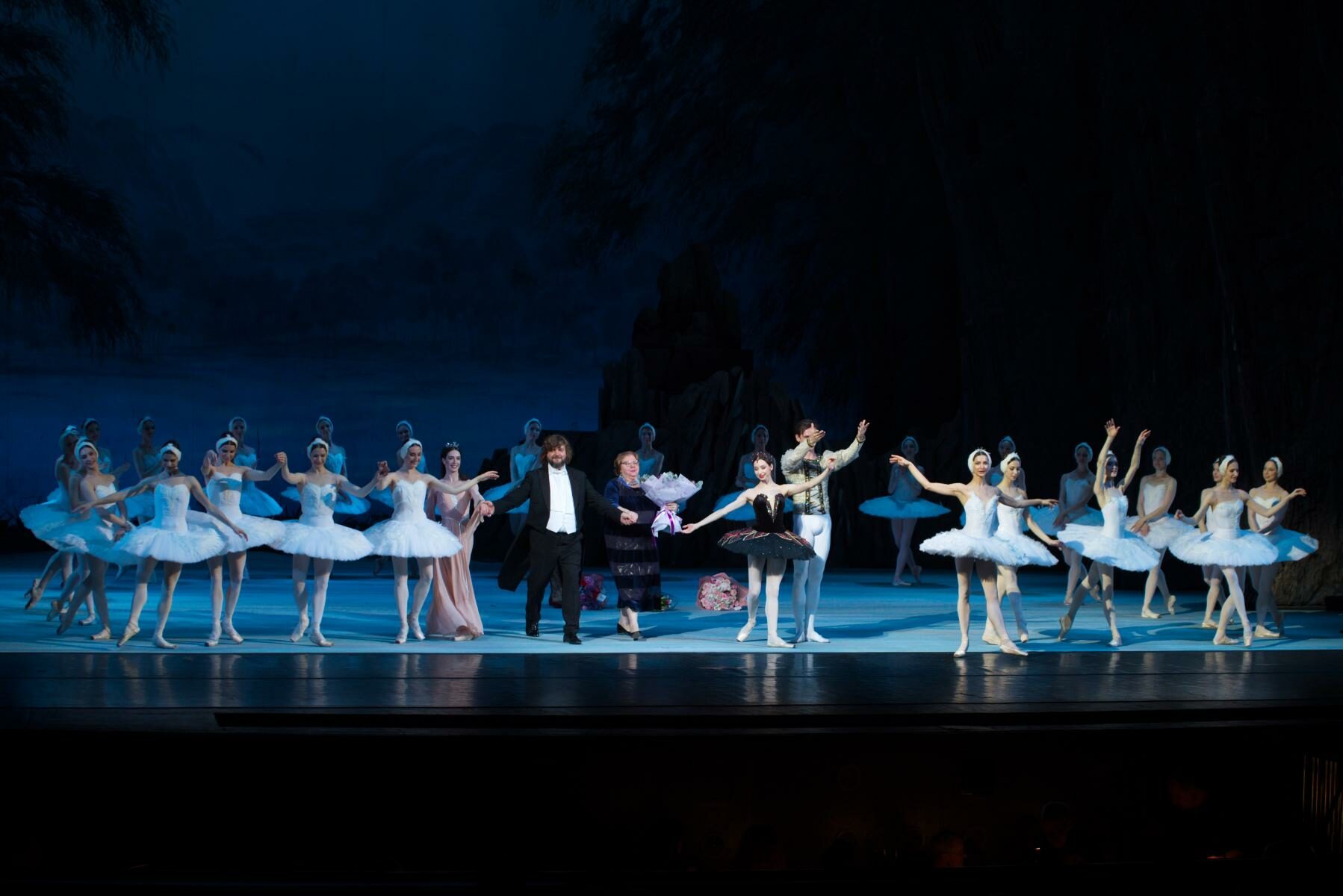“The Flames of Paris”
Bolshoi Ballet
Bolshoi Theatre (New Stage)
Moscow, Russia
June 04, 2023 (matinee)
by Ilona Landgraf
Copyright © 2023 by Ilona Landgraf
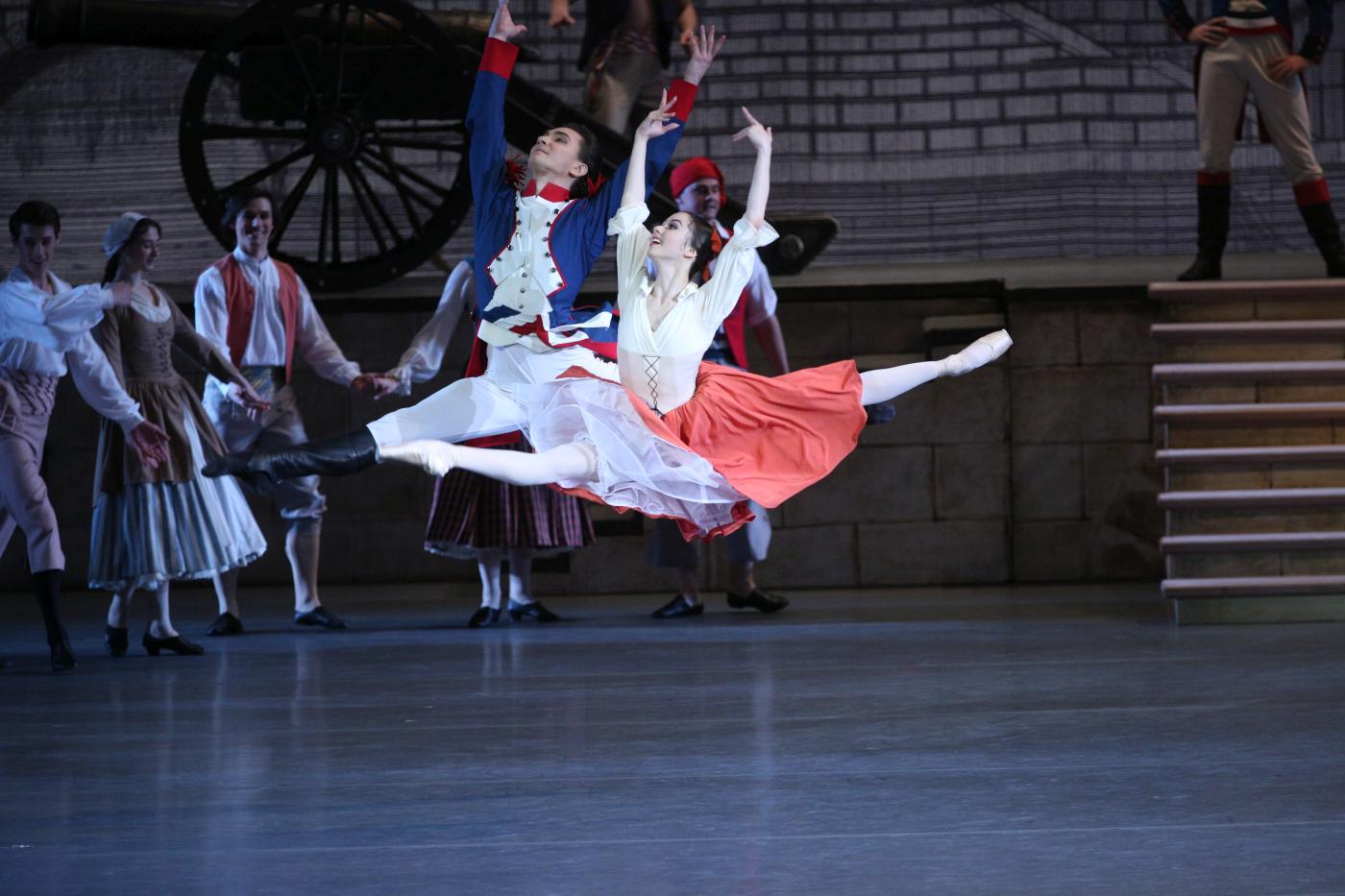 “A highly unlikely work” – commented the late Clement Crisp in his Financial Times review about “The Flames of Paris”, which the Bolshoi Ballet performed at the Royal Opera House as part of their 2016 London tour. He argued that the dramatic scheme was papery and the chief roles were predictable.
“A highly unlikely work” – commented the late Clement Crisp in his Financial Times review about “The Flames of Paris”, which the Bolshoi Ballet performed at the Royal Opera House as part of their 2016 London tour. He argued that the dramatic scheme was papery and the chief roles were predictable.
I checked myself, watching the 85th performance of the latest production at the Bolshoi Ballet’s home base in Moscow.
“The Flames of Paris”, first staged in 1932 at the Kirov Theater in Leningrad (today’s Mariinsky Theater in St. Petersburg) is about how French revolutionaries turned politics and society upside down. Its rousing score by Boris Asafiev draws on music by Lully and Rameau, including the Marseillaise, and climaxes in the powerful revolutionary song “Ça ira”. In 2008, the Bolshoi Ballet’s then artistic director Alexey Ratmansky restored and revised Vasily Vainonen’s original choreography. Nikolai Volkov’s and Vladimir Dmitriev’s libretto, initially spanning four acts, was condensed to two acts. It tells the story of the revolutionaries’ march to Paris and their storming of the Bastille in July 1789. Oblivious to the people’s fury, the monarchy and its representatives continue to debauch in festivities (including a court ballet) at Versailles, but eventually apprehend the looming danger. Puppets of King Louis XVI and Queen Marie Antoinette are already mangled by the crowd, soon to seize the palace.
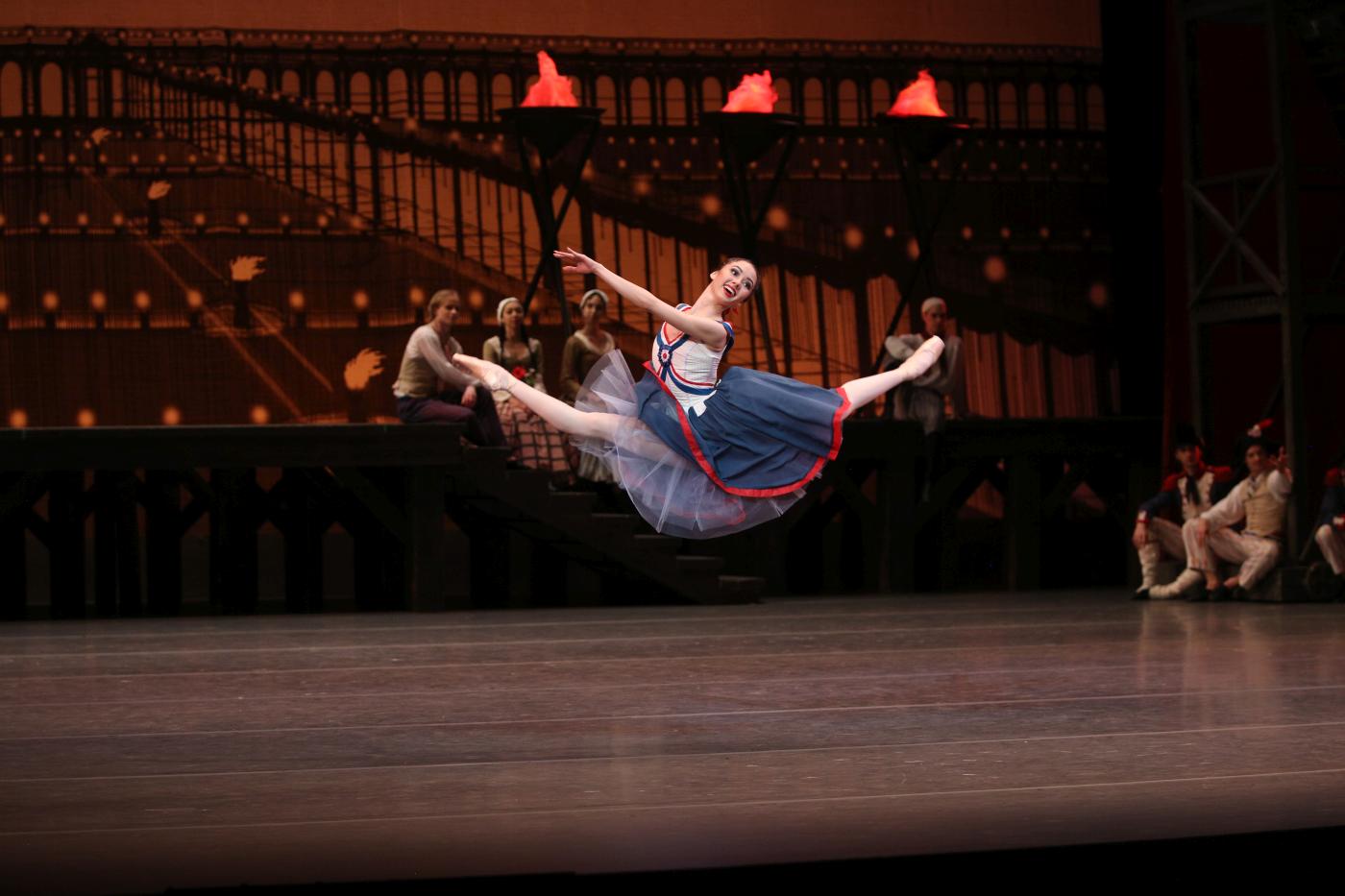
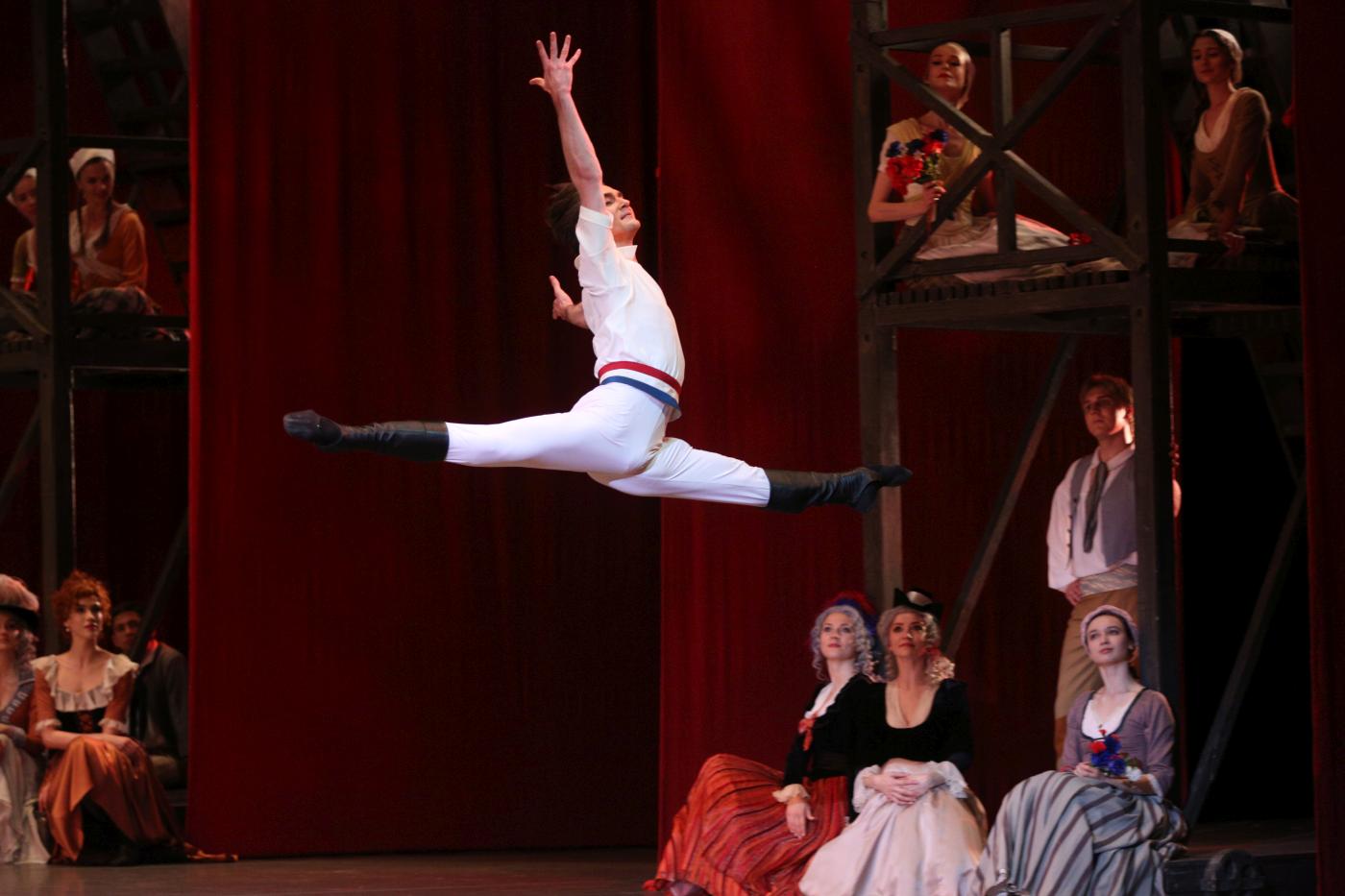 While one narrative thread follows the revolutionaries, another portrays aristocrats. One of them is the Marquis Costa de Beauregard, whose erratic predatory advances on women of any social rank do not preclude the Queen. The Marquis is finally led to the guillotine, but before his execution, his daughter Adeline (who has fallen in love with the young revolutionary Jerome and joined the rebels) is sent to her doom by an old, scheming domestic. While this romance ends tragically, the love between the story’s heroes – the revolutionary Philippe and the peasant girl Jeanne (Jerome’s sister) – seem to face a bright future. Several minor characters and a second performance by the former court dancers (who in the meantime changed sides) densify the plot.
While one narrative thread follows the revolutionaries, another portrays aristocrats. One of them is the Marquis Costa de Beauregard, whose erratic predatory advances on women of any social rank do not preclude the Queen. The Marquis is finally led to the guillotine, but before his execution, his daughter Adeline (who has fallen in love with the young revolutionary Jerome and joined the rebels) is sent to her doom by an old, scheming domestic. While this romance ends tragically, the love between the story’s heroes – the revolutionary Philippe and the peasant girl Jeanne (Jerome’s sister) – seem to face a bright future. Several minor characters and a second performance by the former court dancers (who in the meantime changed sides) densify the plot.
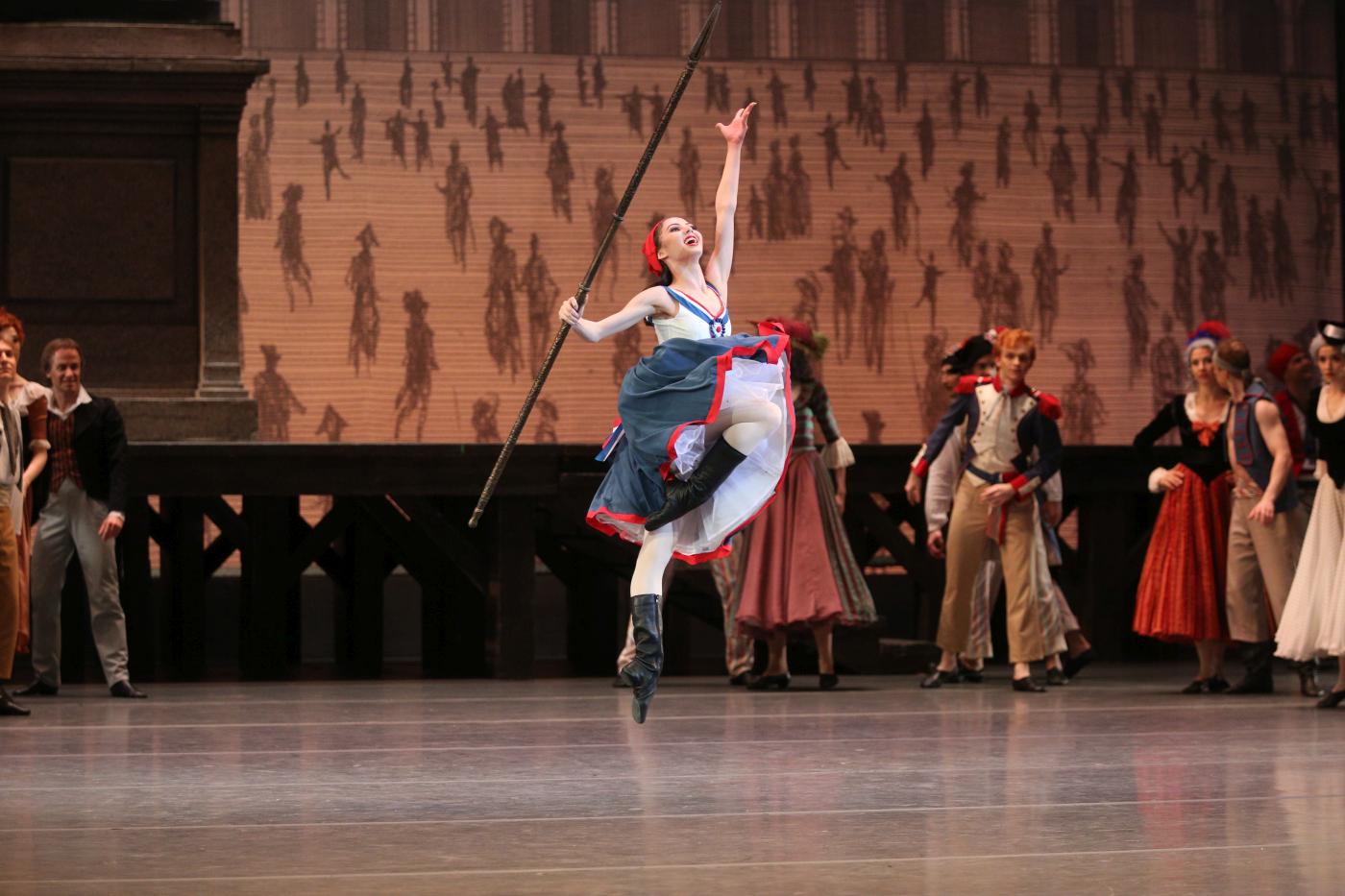
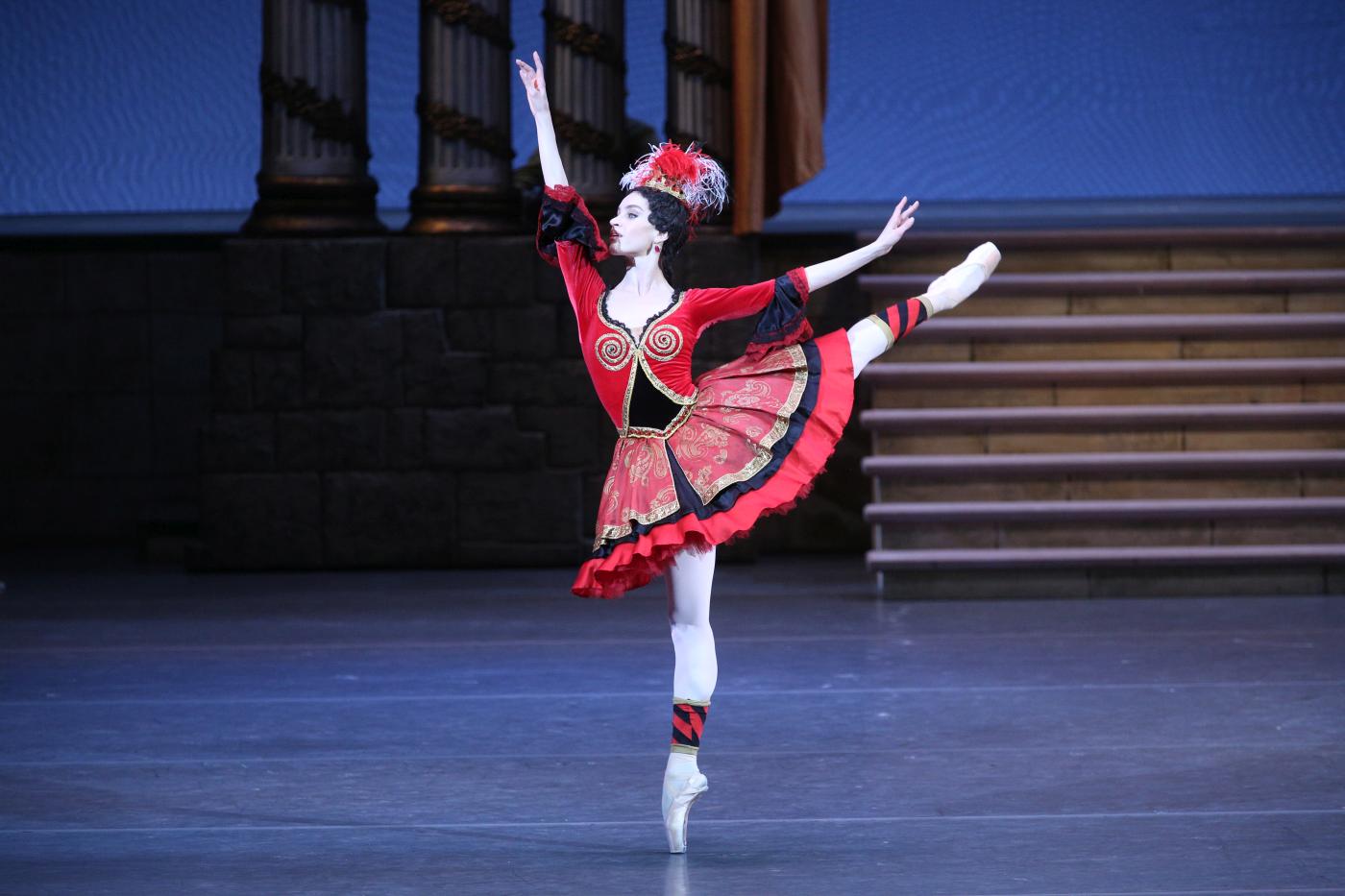 Crisp is right, the story is unlikely – as unlikely as, for example, Shakespeare’s genre defining plays. It’s the nature of theater to live on improbable stories. What about the “papery” (i.e. blatantly meager?) dramatic structure? Could the action be more intricate and gripping? The events were galloping and not least Ilya Utkin’s and Evgeny Monakhov’s clever set (which changed extraordinarily smoothly) ensured that one could easily follow.
Crisp is right, the story is unlikely – as unlikely as, for example, Shakespeare’s genre defining plays. It’s the nature of theater to live on improbable stories. What about the “papery” (i.e. blatantly meager?) dramatic structure? Could the action be more intricate and gripping? The events were galloping and not least Ilya Utkin’s and Evgeny Monakhov’s clever set (which changed extraordinarily smoothly) ensured that one could easily follow.
That leaves the main characters – are they predictable or, as I understand Crisp, one-dimensional? Phillipe certainly isn’t. A steely, unwavering leader, his emphatic heart (which he knows to govern) reveals his depth. Jeanne, burning of her will to fight, stands her ground at the very front like a man, but also has a tender, feminine side. How about Adeline, the highbred young beauty who chooses the right side of history? Does her beheading fit a cliché, or wouldn’t a happy ending be closer to what the audience expects? No, as much as I appreciate the expertise of Crisp, I don’t share his opinion about “The Flames of Paris”. What I saw in Moscow was a thoroughly convincing ballet with stunning momentum and intensity.
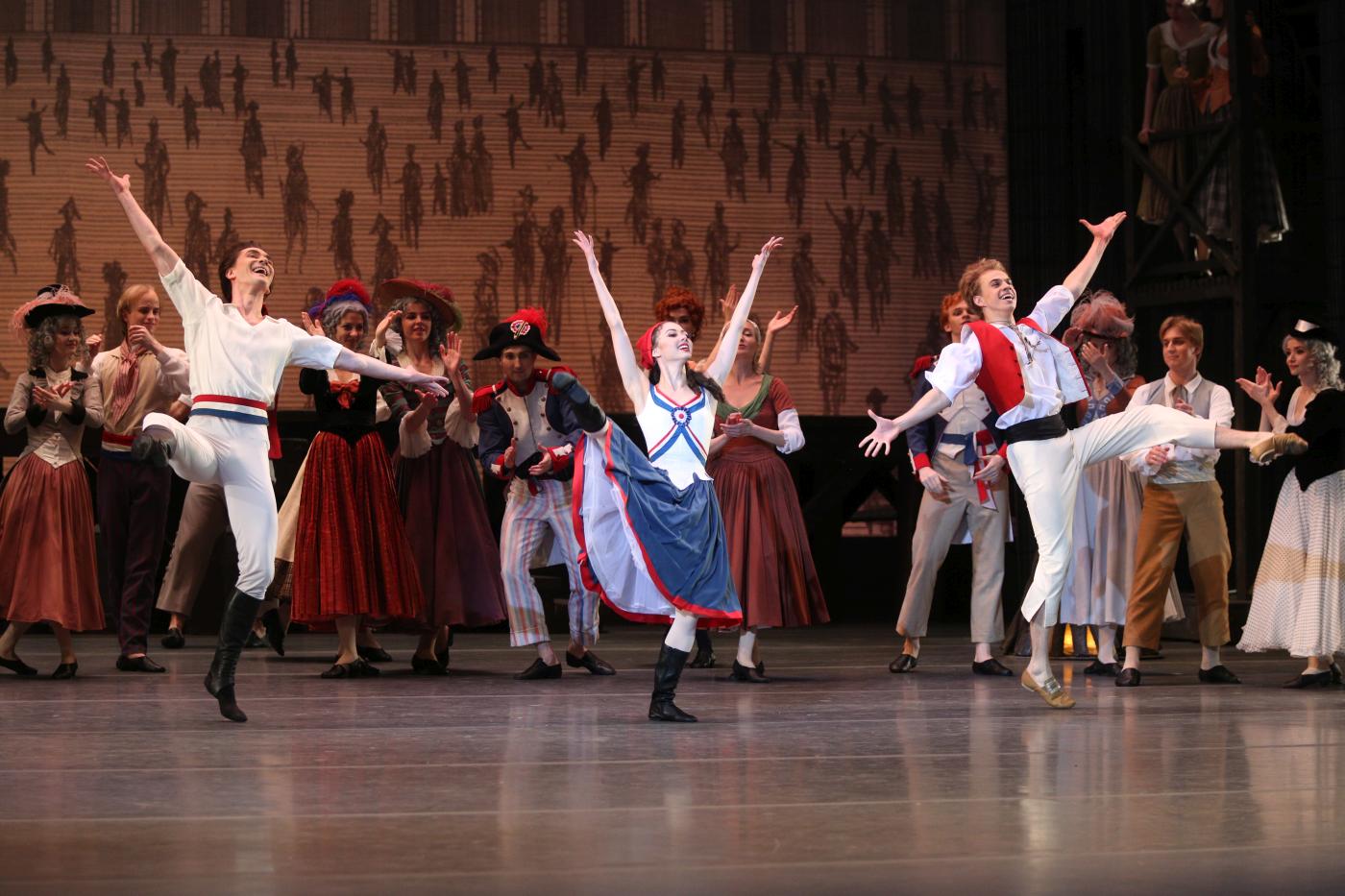 Each and every one on stage was at the top of their game, from the supporting roles, such as the peasants Lucille and Gaspard (Alevtina Rudina and Ivan Prazdnikov, portraying the parents of Jeanne and Jerome) to the leading couple. Elizaveta Kokoreva’s Jeanne combined the utter determination of a rebellious youth (whose stomping made the floor quake) with the purity of a blossoming woman. No one could have curbed her vigor and verve. She found her match in Vladislav Lantratov’s Philippe. The epitome of tough decisiveness, each gesture, each jump of Philippe manifested his purpose. You could already sense by the way Lantratov’s arms reached out before a jump that he would fly high. Lantratov is one of those dancers who belongs to the highest order. Being able to watch him felt like a godsend.
Each and every one on stage was at the top of their game, from the supporting roles, such as the peasants Lucille and Gaspard (Alevtina Rudina and Ivan Prazdnikov, portraying the parents of Jeanne and Jerome) to the leading couple. Elizaveta Kokoreva’s Jeanne combined the utter determination of a rebellious youth (whose stomping made the floor quake) with the purity of a blossoming woman. No one could have curbed her vigor and verve. She found her match in Vladislav Lantratov’s Philippe. The epitome of tough decisiveness, each gesture, each jump of Philippe manifested his purpose. You could already sense by the way Lantratov’s arms reached out before a jump that he would fly high. Lantratov is one of those dancers who belongs to the highest order. Being able to watch him felt like a godsend.
Adeline (Ana Turazashvili) reminded me of an innocent angel who was ready to come down to earth. Her death (caused by the scheming old Jarcasse of Ksenia Mineyeva) was a terrible blow to Jerome (Pavel Smirkov). The good-hearted, impulsive guy had been bursting with drive before being handed the bloody head of Adeline. Mikhail Lobukhin’s Marquis veiled his rotten character behind a sterling façade and until the very last moment showed no signs of regret. One of his conquests was Queen Marie Antoinette (Vera Borisenkova) who – annoyed by her doddery husband (Ruslan Skvortsov) – wasn’t disinclined to a fling. The actors that first entertained at court and later participated in the celebration of the newly founded republic were led by the immaculate Maria Vinogradova as Mireille de Poitiers and Egor Gerashchenko as her admirer Antoine Mistral. Nikita Kapustin’s spunky Gilbert spearheaded the revolutionaries.
Conductor Pavel Sorokin and the Bolshoi Orchestra gave a rousing rendition of Asafiev’s score, intensifying the force of the performance greatly.
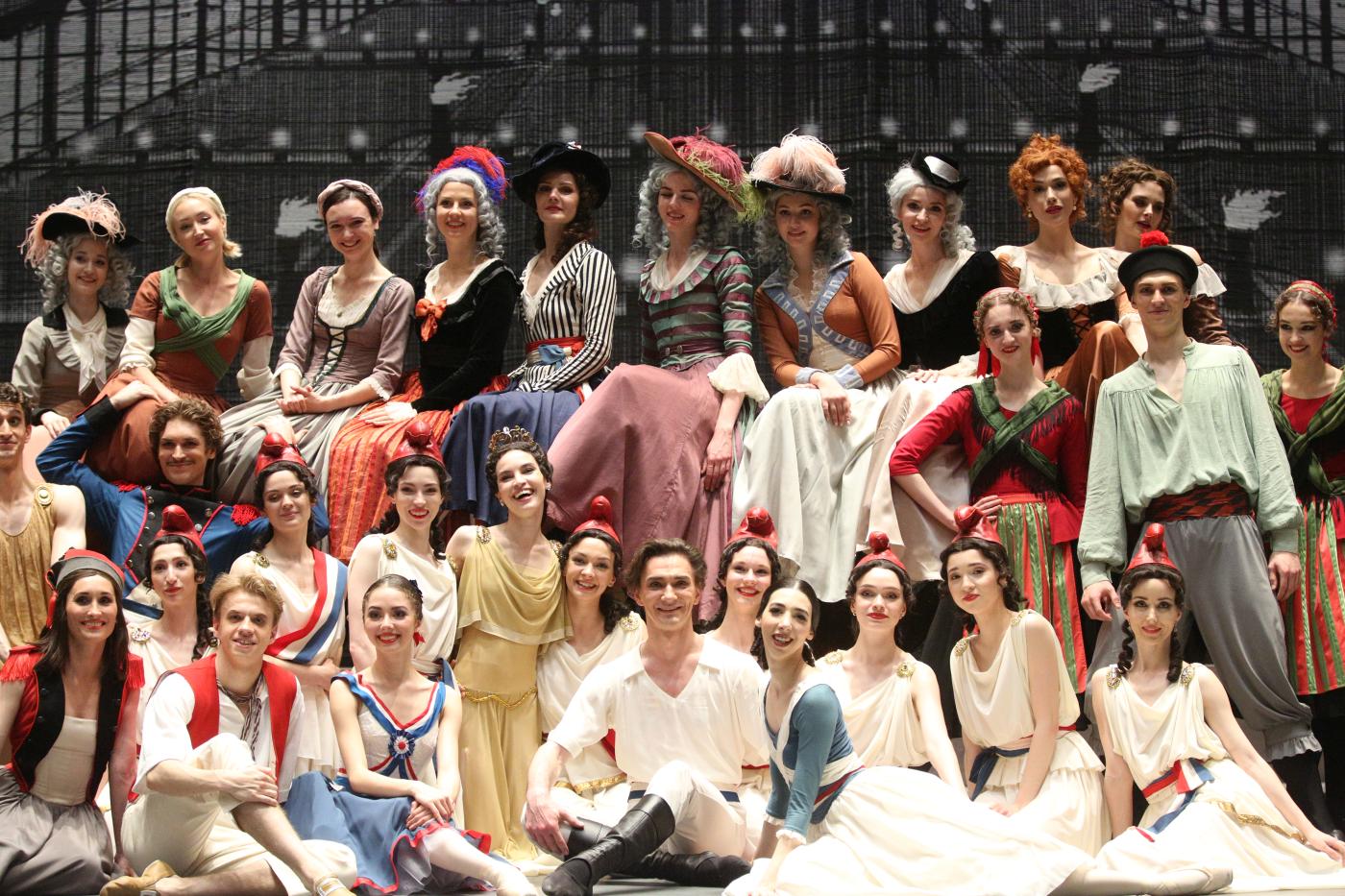
| Links: | Website of the Bolshoi Theatre | |
| Photos: | 1. | Elizaveta Kokoreva (Jeanne), Vladislav Lantratov (Philippe), and ensemble; “The Flames of Paris” by Vasily Vainonen, Bolshoi Ballet 2023 |
| 2. | Vladislav Lantratov (Philippe) and ensemble, “The Flames of Paris” by Vasily Vainonen, Bolshoi Ballet 2023 |
|
| 3. | Elizaveta Kokoreva (Jeanne), “The Flames of Paris” by Vasily Vainonen, Bolshoi Ballet 2023 | |
| 4. | Elizaveta Kokoreva (Jeanne) and ensemble, “The Flames of Paris” by Vasily Vainonen, Bolshoi Ballet 2023 |
|
| 5. | Maria Vinogradova (Mireille de Poitiers), “The Flames of Paris” by Vasily Vainonen, Bolshoi Ballet 2023 | |
| 6. | Vladislav Lantratov (Philippe), Elizaveta Kokoreva (Jeanne), Pavel Smirnov (Jerome), and ensemble; “The Flames of Paris” by Vasily Vainonen, Bolshoi Ballet 2023 | |
| 7. | first row (f.l.t.r.): Pavel Smirnov (Jerome), Elizaveta Kokoreva (Jeanne), Vladislav Lantratov (Philippe), Ana Turazashvili (Adeline); second row: Egor Gerashchenko (Antoine Mistral), Nikita Kapustin (Gilbert), Maria Vinogradova (Mireille de Poitiers), and ensemble; “The Flames of Paris” by Vasily Vainonen, Bolshoi Ballet 2023 | |
| all photos © Bolshoi Ballet / Elena Fetisova | ||
| Editing: | Samuel Snodgrass |
